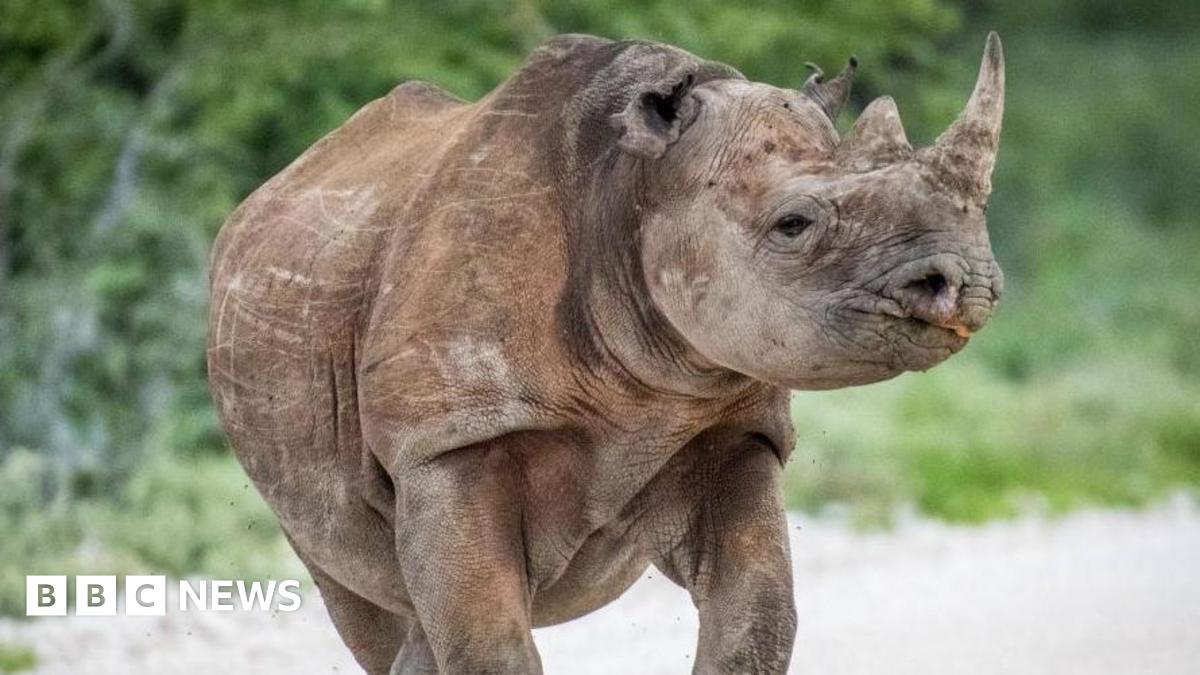Getty
On the evening of Monday, September 22, the western plains of Namibia’s Etosha National Park stood thick and healthy in the fading light. The rainy season had been substantial this year, and as a result, vegetation had grown lush. But in Namibia, a land of salt pans and deserts, where arid-adapted elephants and rare black rhino roam, a turn of events like this can have adverse consequences. “Namibia is naturally fire-prone, with dry savanna and strong winds,” explains Julian Carter-Manning, the founder of Yellow Zebra safari operator. “After a good rainy season, abundant grasses can create the perfect fuel.”
That evening, a wildfire broke out, followed by another two days later. All told, the flames inside Etosha National Park raged until September 30, scorching some 2.1 million acres or just under 40% of the park’s land mass.
Advertisement Advertisement
Advertisement Advertisement
Thankfully, no human casualties have been reported, and because the flames burned in the less-habituated, western reaches of the park, which is as big as half the size of Switzerland, no lodges have been impacted. It’s important to remember that while these fires were likely human-induced—investigations are ongoing—wildfires are a natural part of a savanna ecosystem. Still, when and how these fires burn matter, and full vegetation regrowth will take years.
“Wildfire can have a positive impact, and is indeed an essential disturbance process in savanna ecosystems,” says Andrew Parker, a conservationist and the founder of Conserve Global. “However, if fires are caused by reckless human behavior, then they can rapidly spread in an uncontrolled way and threaten infrastructure, wildlife, and even human lives.”
Etosha is one of the most popular safari destinations in Southern Africa. According to Shaun Stanley, the founder of Stanley Safaris, there's no reason for travelers to cancel upcoming trips—and visitor fees and tourism revenue from safaris can help fund conservation efforts. “Etosha is a huge wildlife reserve, and the fire has affected a portion of the park, so there are still areas to explore,” he says. “Don’t cancel your trips if you have a safari booked to Namibia.”
Here’s everything visitors to the park need to know.
While the park is safe, communities have been affected
As of late last week, the wildfires within the national park have been doused. However, smaller, fully contained fires did spread beyond Etosha’s borders into the Omusati region. This means some herding communities adjacent to Etosha have been impacted. “There are no Indigenous tribes in Etosha National Park—and many farms worked together very hard to stop the fires from entering their areas, with good success," says Andries Liebenberg, a Namibian citizen based in Windhoek, the capital city, who works for Abercrombie & Kent’s Namibia division. "However, there are reports of some farms that have lost a lot of grazing land due to the fires.”
Advertisement Advertisement
Advertisement Advertisement
Dr. Laurie Marker, a celebrated big cat expert and the founder of the Cheetah Conservation Fund, which is based in Namibia, says the impact of the fires on local communities is especially tragic. “While there's a low density of people in the area, fires put them in danger, along with their livestock,” she says. “And when the grazing lands for livestock burn, this affects people’s livelihoods.”
One silver lining, Parker says, is that grassland in these areas is generally low due to grazing by livestock, meaning there’s less fuel for the flames. The main road on the western border of the park also acted as a barrier, preventing the fire from jumping further.
If you’re traveling to Namibia, be sure to talk to safari specialists and trusted advisors who have deep connections in the area, urges Embark Safaris’ Managing Partner Justin Huff. Community-minded operators will direct you to ways to explore the region while having a positive impact on the local economy. Liebenberg adds, “assistance through donations to NGOs and conservation groups is always welcome in Namibia.”
Black rhino Getty
There have been animal casualties, and recovery takes time. But in the long run, there’s reason to be optimistic
While the extent of animal casualties are unclear, there is speculation of antelope and elephant deaths. “We are all very concerned for the wildlife,” says Marker. “Unfortunately, animals will have suffered from burns and deaths, and treating wildlife is not really an option. The hope is that wildlife was able to move out as quickly as possible.”
Advertisement Advertisement
Advertisement Advertisement
Etosha’s enormous size likely helped wildlife steer clear of the flames. “Wildlife can be very clever about sensing danger, so they will tend to keep away from fire,” says Stanley. “In some cases, when there’s a fence around a small reserve, it can prevent animals from escaping, but Etosha is large enough that the animals have space to escape.”
Specific types of wildlife, such as small mammals and reptiles, have undoubtedly suffered. And when high winds whip up multiple flame walls, which likely happened in Etosha, even fast-moving animals can become trapped. Veterinarians have been dispatched to the park and officials are monitoring strategic points, such as watering holes and oft-used natural corridors, to keep an eye on wildlife, according to a recent statement released by Namibia president Dr. Netumbo Nandi-Ndaitwah.
Marker has reported good news on one of the country’s most endangered species. “Fortunately, Etosha is not a major habitat for cheetahs, so there have been no cheetah deaths reported,” she says. In fact, there's a chance future visitors to the park might see more cheetahs than before. “As soon as Etosha receives its next rains, the burnt areas will transform into palatable green grass and attract grazing herbivores,” Conserve Global’s Parker explains. “So while the impact of the fire will, for a short period, look dramatic and negative, the longer term impact will be positive.”
As new shoots grow out of the ground, grazers like oryx, tsessebe, and kudu will follow—and with them, big predators. “Cheetahs follow the antelope, and so we could see a slight population increase,” says Marker.
How will the wildfires affect travel?
Etosha National Park is open to travelers: game drives are running, and lodges, including guest favorites like Onguma Camp Kala, are operating as usual. “Given that Etosha National Park is Namibia’s number one tourist destination and a vital national heritage, the government is committed to doing everything possible to protect it,” President Nandi-Ndaitwah said in her statement last week.
Advertisement Advertisement
Advertisement Advertisement
“In western parts of the park, the main difference will be visual—you might see scorched terrain until the first rains arrive (usually within six weeks),” says Carter. “By the next season, much of the burned park will look alive again.”
With that regrowth, expect new lodges to open, too. Next year is full of exciting openings for Namibia, from debut lodges from Vestige Collection to two new camps from Natural Selection, both slated to open May 2026.
“Etosha is still accessible, and none of our camps have been affected,” confirms Ally Karaerua, who has lived in Namibia for 53 years and is the managing director of Natural Selection’s properties there. “When it comes to veld fires there are always two sides: the amount of devastation that it will bring, and the amount it will eventually help the area.”
Originally Appeared on Condé Nast Traveler
The Latest Stories from Condé Nast Traveler
[SRC] https://www.yahoo.com/news/articles/wildfires-namibia-biggest-national-park-212438336.html
 Visit the website
Visit the website







